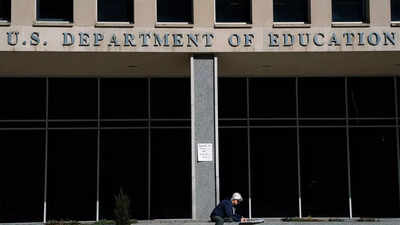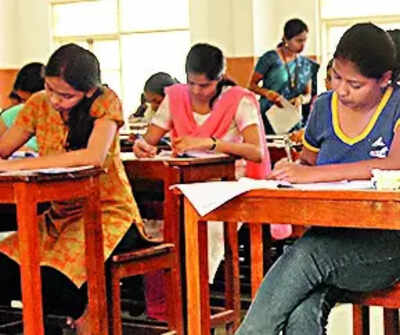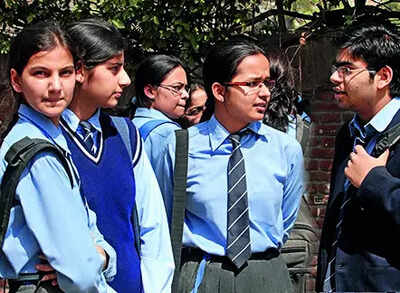Suicides surge in IITs, IIMs and other elite institutions: Will SC intervention put safety before reputation?

The rising incidence of student suicides at India’s top colleges, like IITs, IIMs, AIIMS, and NITs, has caught the eye of the Supreme Court. Since 2018, over 98 students have died, with 39 of these tragedies occurring at IITs alone, according to TNN data.To address the issue, the Court had set up a National Task Force led by retired Justice S. Ravindra Bhat. The group brings together experts in psychiatry, education, law, and social justice, along with government officials. Their task is to understand why these deaths are happening and suggest reforms for colleges and universities across the country.As part of its work, the task force launched a nationwide survey, reaching out to students, faculty, parents, and administrators. The goal was to collect clear and detailed insights into the factors driving student suicides and recommend solutions. Despite repeated reminders, only around 3,500 of more than 60,000 higher education institutions responded. This included 17 IITs, 15 IIMs, 16 AIIMS, and 24 NITs. By September 2025, over 100,000 responses had been gathered, but many institutions were still slow to participate.The Supreme Court has warned that institutions ignoring this effort could face legal troubles and damage to their reputation. Regulatory bodies like AICTE and the Bar Council have been asked to ensure institutions follow the rules.
Rising student suicides across India
The reality is sordid. The 2025 report from the National Crime Records Bureau shows student suicides rose from 8,423 in 2013 to 13,892 in 2023, a 65 percent increase. Students now account for 8.1 percent of all suicides, up from 6.2 percent in 2013. The data shows that 7,330 males, 6,559 females, and three transgender individuals died by suicide in 2023. Maharashtra, Madhya Pradesh, Uttar Pradesh, and Tamil Nadu reported the highest numbers of student suicides. Most cases involved students up to Class 10, but even graduate-level students were not immune.
The unseen pressures behind suicides in elite institutions
Students at elite schools feel a crushing pressure. Academic challenges, financial problems, discrimination, ragging, and the taboo around mental health combine to create a difficult environment. Although these colleges are known for high standards, they often fall short in supporting students’ emotional well-being.These suicides result from a mix of academic stress and social pressures. High expectations and fierce competition push many students past their breaking points.Many students avoid seeking help. Instead, some turn to unhealthy habits like substance abuse. Social exclusion and campus culture add to the stress, especially when colleges mirror upper-caste or city-centric norms that leave some students feeling out of place and unsupported.At a deeper level, colleges have not done enough to fix systemic inequalities or provide safe, nurturing spaces for all students. This mix of stress, poor mental health resources, discrimination, and administrative neglect has created a crisis where lives are at stake. It’s clear urgent reforms in policies and campus culture are needed.
Institutional efforts and gaps
The task force set up by the Supreme Court launched multilingual online surveys for students, faculty, parents, and administrators on ntf.education.gov.in. By September 2025, over 100,000 responses were collected. Onsite visits across 13 states added more insights.Some colleges have begun offering mental health support, but the efforts are uneven. Data from Indian Express obtained under RTI shows that major IITs, including Kanpur, Roorkee, Delhi, and Bombay, have increased counseling sessions since the pandemic. At IIT Kanpur, the number of sessions doubled to 4,113 in 2024, with more than 1,600 students seeking help. Officials said the rise reflects both the lingering effects of the pandemic and a shift in attitudes that has made students more willing to reach out for support.While these efforts are positive, they are not uniform. Many students still lack access to timely support. Experts say small measures cannot replace systemic changes. The absence of clear accountability leaves students at risk.
Supreme Court policy reforms
In July 2025, the Supreme Court issued 15 guidelines for all educational institutions. The guidelines include:
- Mandatory trained counsellors in institutions with 100 or more students
- Regular mental health training for staff and faculty
- Confidential grievance committees
- Safety protocols to prevent self-harm
- Ban on academic practices that increase stress, like marks-based segregation
- Promotion of mental health literacy, peer support, and helpline services such as Tele-MANAS
- Public disclosure of mental health policies and annual policy reviews
These rules aim to make mental health a core responsibility for colleges. They go beyond temporary measures and require accountability.
Institutional accountability
Rising suicides show a system failure. High academic standards often exist alongside weak psychological support. Marginalized students are especially affected. The National Task Force will recommend policies that create inclusive academic environments, reduce stigma, and protect student wellbeing.Colleges can improve by:
- Expanding counselling services and maintaining minimum counsellor-student ratios
- Adding mental health literacy to the curriculum from early years
- Strengthening peer support and anonymous reporting systems
- Conducting regular checks on student wellbeing and institutional response
- Monitoring students to identify those at risk early
Building a safer future for students
Prestige and reputation do not protect students from mental health struggles. With student suicides exceeding other causes of death in some age groups, Supreme Court interventions show that mental health cannot be an afterthought. It has to be part of education.Though some initiatives exist, the scale of the crisis demands bigger reforms. Campuses need systemic change, clear accountability, and cultures that actively support students. Judicial steps, task force recommendations, and enforceable rules offer hope to move from responding to tragedies toward genuinely protecting student lives and dignity.






